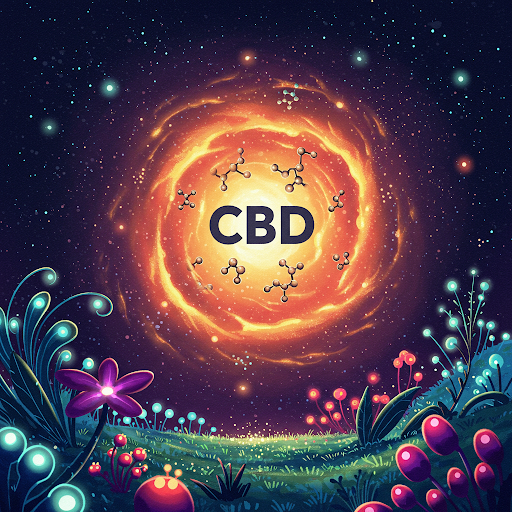In a CBD breakthrough study published in ACS Neuroscience, researchers at the University of Mississippi have made a significant discovery about how cannabidiol (CBD) interacts with tetrahydrocannabinol (THC), the psychoactive compound in cannabis. This research could revolutionize the way cannabis is used for pain management and stress relief, leading to more refined treatments with fewer side effects.
CBD’s Role in Mitigating THC’s Effects
The study focuses on how CBD can help reduce the negative effects of THC, such as memory loss, nausea, and addiction. While THC effectively relieves pain by binding to cannabinoid receptor type 1 (CB1), a protein found throughout the body, it also triggers unwanted side effects. Conversely, CBD interacts with CB1 differently, acting more like a dimmer switch rather than an on/off switch.
Researchers have identified the specific locations on the CB1 receptor where CBD binds. This discovery opens up new possibilities for developing targeted therapies. Specifically, ones that harness the benefits of THC while minimizing its harmful effects.
♦ Interested in high-quality CBD edibles and merchandise? Check out the FGE shop ♦
“This research will open a new avenue for anyone in the field of cannabis research,” said Amar Chittiboyina, principal scientist and associate director of the National Center for Natural Products Research, who led the study. “It actually opens up new prospects or a new horizon in modulating cannabinoid receptors and harnessing THC’s beneficial effects for pain management.”
This research may pave the way for developing a synthetic CBD that can more efficiently modulate CB1 receptor behavior, even more effectively than natural CBD. This could lead to more precise and effective pain management solutions.
Understanding the THC and CBD Connection
The 2018 Farm Bill, which decriminalized hemp, has spurred a surge in CBD research and use. However, the fundamental question of how CBD works at the molecular level has remained a mystery. This new study provides valuable insights into the intricate relationship between CBD and THC, shedding light on their individual and combined effects on the body.
The researchers’ discovery of where CBD binds to the CB1 receptor is a crucial step toward understanding how to minimize THC’s side effects. This breakthrough could lead to the development of new cannabis-based therapies. This may lead to new therapies offering the benefits of THC for pain relief while minimizing its drawbacks.
The CBD Breakthrough Therapies
This research highlights the vast potential of cannabis beyond its recreational use. By understanding the complex interactions between its various compounds, scientists can unlock the therapeutic potential of cannabis. This may include a wide range of medical conditions, paving the way for more refined and effective treatments.






